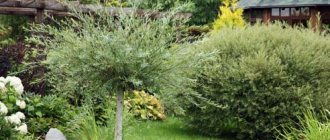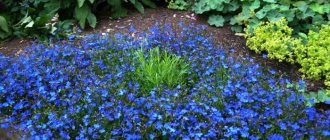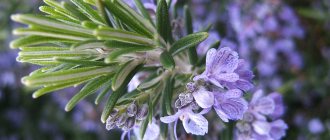| Place | Name | Characteristics in the rating |
| The best varieties of floribunda roses for Siberia |
| 1 | Home and Garden | Better endurance and unpretentiousness |
| 2 | Gartenfreude | Self-cleaning ability |
| 3 | Solero | Resistant to fungal diseases |
| The best climbing varieties of roses for Siberia |
| 1 | Rosarium Jutersen | The most popular variety. Excellent aroma. Incredible pomp |
| 2 | Jasmine | An excellent combination of beauty and frost resistance |
| 3 | Swan Lake | Strong odor |
| The best hybrid tea varieties of roses for Siberia |
| 1 | Black magic | Better resistance to external factors |
| 2 | Blue Moon | Fast adaptation |
| 3 | Red Intuition | Best price. No thorns |
| 4 | Osiana | Soft color. Long stems |
What is winter hardiness and how is it determined?
Winter hardiness is the ability of plants to withstand various environmental factors in the autumn-spring period. Winter hardiness includes some concepts: cold resistance is a characteristic of a variety that gives it the ability to withstand low positive temperatures from +0 to +10°C, frost resistance is a determinant of the ability of plants not to die at low negative temperatures.
Winter hardiness is a trait responsible for the viability of a rose in areas with harsh climatic conditions, the ability to withstand a whole range of unfavorable conditions. Among them:
- sudden temperature changes;
- return frosts;
- icing;
- snow and wind load;
- prolonged thaws;
- winter dryness.
This indicator primarily depends on genetic predisposition, but can also change due to the conditions of the summer growing season.
Good weather in summer:
- sufficient rainfall;
- optimal humidity;
- sunlight;
- heat stimulates excellent growth and full development;
- and also affect the degree of color stability.
When choosing a variety, it is advisable to focus on local species of roses adapted to given climatic conditions.
This is interesting: Rosa Westerland - planting and caring for a park species
Choosing a location: looking for the sunny side
Due to the fact that spring comes late in Siberia and there are not very many sunny days a year, they try to plant roses on the south side. But a completely open area is not very profitable, since the flowering period is significantly accelerated, and the flowers fade in the heat. It is best to consider light partial shade with the help of sparsely leafed shrubs or trees. Roses are planted near them in such a way that during the hottest time of the day they are protected by the foliage of the “neighbors”.
It is advisable to select high places on the site for the rose garden. There, the degree of soil freezing is always less, which means the roots will wake up faster. This will also save the plant from high humidity, which is typical for lowlands. Too much moisture provokes the development of rot and fungal infections.
Recent Entries
Lilac perennials that are beautiful, compact and do not crowd out other plants Why when buying seedlings you should not take the sellers’ word for it and how to determine the age of the plant using 3 signs Tomato seedlings have turned purple or whitish: why the color has changed and how to save the plants
Strong winds are common in Siberia, with cold fronts coming from both the north and the west. From these directions (north, northwest and northeast), roses need protection in the form of buildings, gazebos, coniferous hedges, etc. But the wall should be at such a distance that a shadow is not cast on the bushes.
Material about plants suitable for hedges will also be useful:
Restoring the rose garden after winter.
Having survived the Siberian winter, the rose garden needs proper restoration. Before the buds bloom, it is necessary to prune for sanitary purposes, removing frozen shoots and dry stumps. Plants can also be trimmed for the future formation of a bush.
In the spring, you should feed the roses with fertilizers containing nitrogen, after watering the flowers with warm water. It is worth periodically spraying the rose garden with calcium nitrate in dry weather in the evening. Do not overdo it: excess nutrients can destroy the bushes.
Winter-hardy roses will serve as a wonderful decoration for any landscape. A competent choice of variety and proper care will allow the rose garden to please the gardener’s eye for a long time.
If you have any questions, leave them in the comments on the website or on social networks, such as Instagram.
Planting, care and cultivation
Despite the relatively simple care, the type of roses that creep along the ground requires compliance with a list of rules that will help create the most comfortable conditions for plants to grow and develop.
Read also: How to cook green peas
We plant ground cover roses on hills, in well-lit places, which are shaded during the peak of the midday heat. Otherwise, the rose may get burns to the leaves and petals. Also in lowlands, the bush may suffer from excess moisture, which can lead to rotting of the root system. An ideal option would be a raised flower bed or a hillock.
Plants love chernozem soils; light loamy soils are allowed. The soil reaction should be slightly acidic. It is quite simple to create conditions on the site, so even if you do not live in an area with chernozem soils, this is not a reason to refuse roses on the site.
If there were already roses in the selected area, then the soil will have to be carefully prepared. Flowers will not like alkalizing the soil; you will need to prepare a suitable substrate and plant the rose in a deep hole with completely prepared soil.
Pruning ground cover roses
If the rose bush was planted in the fall, there is no need to prune it in the spring. For an already established plant, pruning is carried out in the spring, at the beginning of the growing season, after the cover has been removed. Pruning itself comes down to cutting out dried, diseased shoots. A creeping bush requires minimal crown formation.
Total pruning completely rejuvenates the plant and makes further care much easier. However, this approach will require about six months for the rose to restore its green mass, and the area will look unsightly.
Video on pruning ground cover roses to help:
How to cover ground cover roses for the winter
In temperate climates, most ground cover roses tolerate wintering well without shelter, but in regions where severe frosts are possible, it is better to play it safe and provide shelter for the plants.
The shoots are covered with branches and spruce branches. Spruce branches can also be laid on the ground under rose vines to prevent rotting of the branches. To create a shelter with an air gap, dense fabric, lutrasil, or tarpaulin can also be used. The material can envelop the bush or be laid on agrofibre or metal arches.
Propagation of roses by cuttings
The most accessible method, even for a novice florist, is propagation by cuttings for ground cover roses. Also, these plants have the ability to take root with their stems during prolonged and close contact with the ground, which practically eliminates the need for the owner to wait for roots to appear.
Mature shoots are selected for cuttings. In most varieties they reach the thickness of a pencil. The exception is miniature varieties, where the thickness will be less.
For planting, a shoot of at least 3 internodes is selected. The cut is made under the lower bud. You need to carefully remove the lower leaves and thorns. The cuttings are immersed in a solution of a growth stimulator for 2 hours.
A shaded area is selected for rooting. Dig a hole or trench if there are multiple cuttings. Depth about 15cm. add sand to a third of the depth and plant the cuttings. The bud under the bottom leaf should be close to the ground. The distance between the cuttings is 15-20 cm. In the spring, the plants are transplanted to a permanent place.
Cuttings are one of the most popular methods. It is affordable and allows you to get several bushes at once. The most crucial moment is the formation of roots. Often the leaf buds are activated first and the gardener relaxes. At this stage, the gardener can relax and begin to water the cuttings too much, which leads to rotting. Keep the soil and sand moist, but don't overdo it. Use growth stimulants to increase the survival rate.
With the advent of hardy and frost-resistant varieties, growing roses became available in the gardens of Siberia. Here, the regional climate is somewhat harsh for the crop, so gardeners are required to have good knowledge and adherence to agricultural technology, careful selection of winter-hardy varieties and shelter for the winter.
The best variety of floribunda roses for Siberia
Roses of this group resemble hybrid tea roses in the shape and beauty of the flower, but differ from them in that they bloom more profusely and almost without interruption. They are characterized by good frost resistance, and they also have good immunity to pests or diseases.
Solero
Rating: 5.0
The German variety Solero deservedly tops the ranking of the best roses for Siberia. This is a very beautiful floribunda at any stage of dissolution. The shrub grows upright. Its height reaches 70 cm and width - 50 cm. Rose Solero is a repeat bloomer. Semi-matte foliage is densely spaced. Its color is dark green. It has good resistance to fungal diseases.
Solero roses are densely double (75-78 petals). Their shape is cupped and its diameter reaches 7-8 cm. The color of Solero distinguishes it from other yellow roses. It is delicately lemony and richer in the middle. The shrub is not tall, but all summer it is abundantly covered with flowers.
In reviews, flower growers note that it is better to plant Solero on the edge of a flower bed, since the bush is a little spreading. Our experts included this variety in the rating because it has good frost resistance. Solero roses also withstand rain and bright sun rays well. These roses are absolutely not afraid of black spot or powdery mildew.
Advantages
- blooms profusely;
- beautiful yellow-lemon color;
- healthy and resilient;
- good winter hardiness.
Flaws
- the aroma is barely noticeable.
Rosarium Uetersen
One of the most popular varieties of climbing roses in Siberia due to its resistance to frost and fungal diseases. This is a powerful plant with strong shoots and abundant repeated flowering.
The flowers are dark pink (fade over time), densely double, medium in size (diameter 5-6 cm, but can reach 12 cm). The foliage is large and healthy.
Shade tolerance is average, resistance to powdery mildew and black spot is very high.
| Purpose | Plant height | Bloom | Aroma | Winter hardiness |
| 280-300 cm | Remontantnoye: the first wave - from mid-June to early July, the second - from mid-August to early September | Rich, pleasant | High | |
The best hybrid tea roses for Siberia
Hybrid tea roses are often called bush roses by common people. They are also popular in Siberia.
Ashram
Rating: 5.0
The first place in the ranking was given to the hybrid tea variety Ashram. The height of the bushes does not exceed 80-120 cm, but they are quite strong. The foliage of the plant is healthy. Gardeners note that the variety grows well even from weak seedlings. He is characterized as tenacious and strong. The ashram is good for cutting.
Fragrant, large flowers make this variety unusually beautiful. The color includes bright honey-brown or orange shades. And as the roses bloom and fade, they become lighter. Considering that the buds do not bloom at the same time, a bush with roses of different colors looks very bright and picturesque.
According to gardeners, the flowers on the bush dry out slightly and remain that way for a long time. The variety is deservedly in the ranking of the best, since it has excellent frost resistance. Rose growers also note the high resistance of Ashram roses to major diseases and numerous rainfalls.
Advantages
- unusual color of roses;
- beautiful bush;
- maintains color purity for up to 2 weeks;
- high winter hardiness.
Flaws
- lack of aroma.
Chippendale
Rating: 4.9
The variety of hybrid tea roses Chippendale occupies the second position in the ranking. The plant is growing strongly. It can reach a height of 80-120 cm and a width of 1 m. The bush is covered with a large number of glossy dark green leaves. The shoots stand straight, covered with a large number of thorns. With proper care, the plant looks compact and neat.
There are up to 3 buds on each stem. They are round-ovoid in shape, densely terry (up to 100 petals). Initially, their color is dark orange, but at different stages of flowering it changes. Only when they bloom do they have a pink color, turning into salmon closer to the middle. As they bloom and under the influence of the sun, the petals acquire a delicate peach color.
According to reviews, Chippendale roses have a pronounced aroma. It includes fruity notes and oriental spices. Our experts included this rose in the rating of the best, since it is quite frost-resistant, has decent immunity and does not deteriorate under prolonged rains.
Advantages
- attractive-looking bush;
- It does not require special care;
- fragrant flowers;
- are not afraid of rain or frost.
Flaws
- numerous thorns.
Climbing
Unlike bindweed plants, climbing roses do not crawl along the fence on their own. Their shoots have to be laid down. The plant is tied to a rod so that it does not sway in the wind. In Siberia, rose crops are often planted next to thuja, using the latter as a support. In open areas, trellises and pergolas are suitable for supporting shoots. Climbing varieties of plants love sunlight, so you will have to try to ensure that other crops do not shade them.
Jasmine
A profusely flowering variety, the shoots of which reach 3 m. During the summer, inflorescences appear on the bush twice. They have a pinkish-lilac hue, a diameter of 6-7 cm. Up to 10 flowers can be located on one stem.
Related article:
How to care for roses in pots
The leaves of the plant are dense and glossy. When it rains, the inflorescences close until sunny weather arrives. This is an unpretentious rose for Siberia, but in unfavorable years it can be affected by fungal diseases.
Swan Lake
The name of this amazing species translates as “swan lake”. The second name is Climber. The variety is elegant, with dense double inflorescences up to 9 cm in diameter. The buds have a soft creamy hue. They are resistant to rain. Up to 3 inflorescences appear on one stem.
The shoots of the bush grow up to 3 m. The crop blooms throughout the season, delighting with beautiful inflorescences and a pleasant aroma. It is resistant to fungal diseases and is rarely affected by them.
Interesting! The best varieties of park roses
Golden Celebration
This variety of roses was also bred by the tireless David Austin. Golden Celebration is extremely resistant to frost and disease and is only afraid of black spot. Shade tolerance is average.
Double spherical flowers are painted in a beautiful bright yellow color (quite rare for English roses), reminding Siberians of the sun and warmth. The flowers are quite large, their diameter is about 16 cm. The leaves are shiny, light green.
| Purpose | Plant height | Bloom | Aroma | Winter hardiness |
| 130 cm | Abundant, remontant: the first wave - in early June, the second - in September | Light, lemon-caramel | Medium, requires shelter for the winter | |











